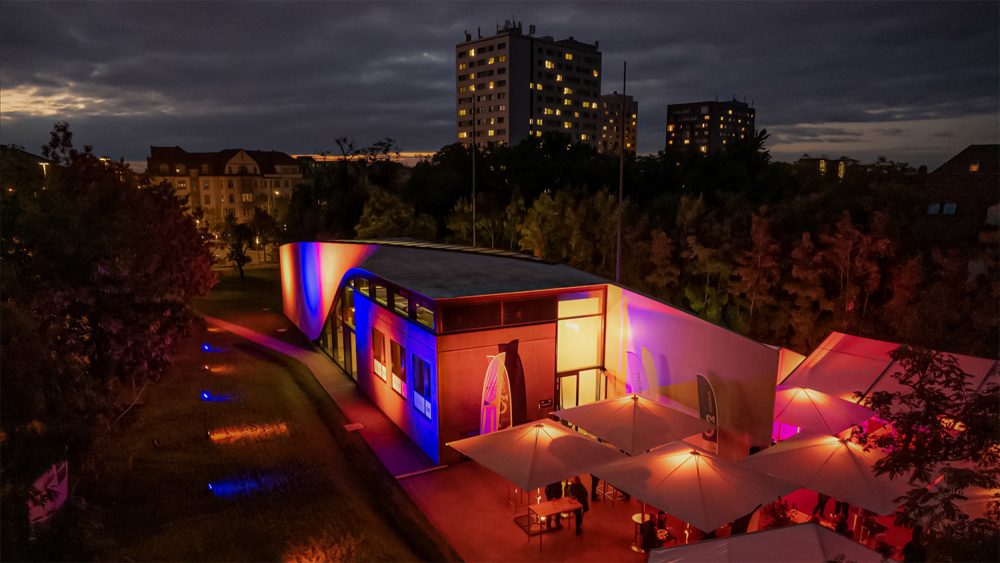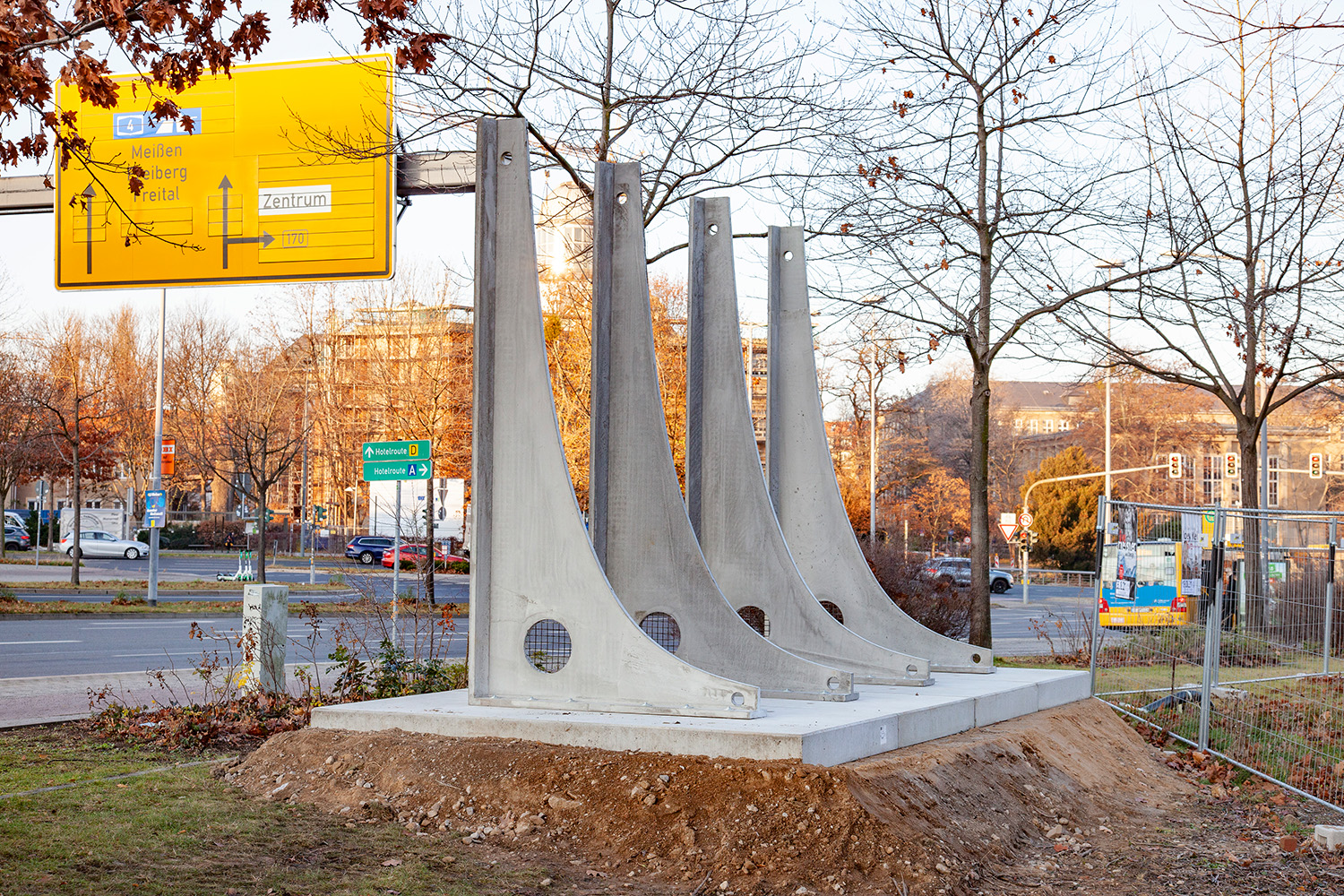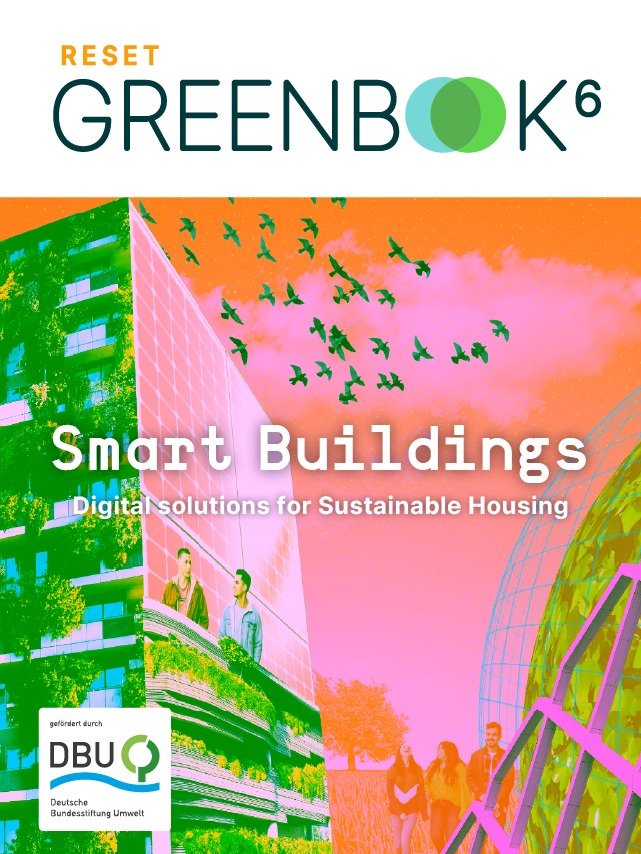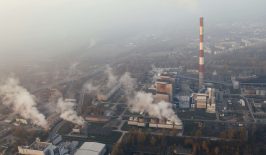Residential buildings, office buildings, bridges — concrete is used everywhere. The material is robust, comparatively cheap to produce and provides rudimentary heat and sound insulation all by itself. However, the production of concrete releases almost one-tenths of the total man-made CO2 emissions worldwide. For a successful construction turnaround, we therefore need to replace concrete with alternatives — as quickly as possible.
These alternatives can look like is demonstrated by Dresden’s new the CUBE building, which was designed and built by the Technical University of Dresden as a pilot project. It is the first building to be made entirely of carbon concrete — apart from its windows, which are made from a glass and steel. Crucially, construction with carbon concrete requires only about half the material costs and releases just under one-fifth of the CO2 of equivalent concrete.
Concrete and its cement problem
But what actually makes concrete so harmful to the environment?
One of the main components of concrete is cement. Anyone who has ever come across a huge building complex in rural areas, to which trucks drive every minute, has probably seen a cement plant.
Large quantities of limestone and clay are required for the production of cement. These materials are ground to a fine sand in large mills and then burned in blast furnaces at over 1,400 degrees. Their operation alone is extremely resource and energy-intensive. The heating of the kilns alone is responsible for one third of the CO2 emissions in concrete production.
Globally, concrete production is responsible for 8 percent of toal global emissions, generating around 2.8 billion tonnes of carbon per year. But making concrete production — or the operation of blast furnaces — more efficient is not really a sensible solution. Frank Winnefeld, a researcher for sustainable cement at Empa in Dübendorf, sees this as solving only the smallest part of the problem. He told Spektrum that most of the CO2 emissions released are caused by a chemical reaction in the limestone, so the chemical componants themselves would have to change.
Researchers are definitely looking at ways to make the production of concrete more sustainable. For example, another process involves the use of water and calcium carbonate, which could be broken down using electrical energy. The released calcium hydroxide can then be processed together with sand to produce cement. Ideas such as making concrete from old diapers, on the other hand, are projects that researchers will have to work on for a while yet. But while the bright idea for green concrete still needs some time, there are already ways to reduce the need for conventional concrete. And one of these solutions is carbon concrete.
Carbon instead of steel significantly saves material
To make concrete usable as a building material, cement is poured into moulds or several layers of the material are applied on top of each other. Steel reinforcements are placed in the concrete parts to make the finished components more resilient. At the same time, the steel used prevents the formation of cracks in the surface of the concrete.
In carbon concrete, these reinforcements are replaced by braided mats of carbon threads. As a result, carbon concrete behaves very similarly to conventional reinforced concrete in terms of handling. Construction companies can cast the required components or apply them in layers on top of each other. However, they can be much more economical in doing so, because carbon beats steel reinforcements in one important area: it cannot rust.
If moisture penetrates conventional concrete, the steel reinforcements corrode and the components run the risk of becoming unstable. The solution up to now has therefore been to build thicker components to protect the reinforcements. Since carbon cannot rust, far thinner components can be produced. According to Prof. Curbach of the TU Dresden, this could result in up to 50 percent of material savings.
CUBE proves that carbon concrete is already suitable as a building material
Carbon concrete had already been being used as a building material in industry — but currently only for the restoration of bridges or other infrastructure. Dresden’s CUBE, funded by the German Federal Ministry of Education and Research, is a lighthouse project for new construction.
Apart from the material savings, the CUBE demonstrates the new possibilities of carbon concrete by means of two shells arranged opposite each other and twisting into each other. Such shapes are not possible with conventional concrete. Speaking to the German Council for Sustainable Development, senior construction manager Matthias Hietze revealed,
“We wanted to show what is technically and economically possible.”
For this reason, he said, more ambitious shapes and designs were developed together with the Munich-based architectural firm Henn.
The entire building can be viewed virtually on the project’s homepage. In addition to the outer shell made of carbon concrete, the construction of the inside of the CUBE includes a two-story core with offices. The remaining interior space serves as seminar and meeting rooms.
What hurdles does carbon concrete still have to overcome?
Even though the CUBE in Dresden already demonstrates what modern buildings made of carbon concrete can look like, there are still some hurdles to overcome. This is because conventional walls made of reinforced concrete are thick enough to not only offer a high level of stability, but also provide good heat and sound insulation. The thinner walls made of carbon concrete do not currently achieve this to the same extent. In order to be able to use the new type of concrete for residential buildings, for example, it must be combined with other materials for insulation.
Potential health hazards of the new building material are also still being researched. The University of Rostock is conducting its own research to find out “whether substances harmful to health are produced during the life cycle of the material.” The project is part of a project with more than 160 partners from industry and research.
If carbon concrete proves to be robust, safe and harmless to health in the coming years, there is one last property we need to consider for sustainable buildings.
Can carbon concrete be recycled?
Reinforced concrete does have one positive property: the components can be very easily separated into steel and concrete during demolition. Demolition companies crush the concrete parts in several steps and then pull out the steel reinforcements with magnets. This is not only particularly easy, but recycling also succeeds with a material purity of almost 100 percent. Demolished concrete can then be reprocessed as a recycled material for fresh concrete or used as a base course in road and path construction.
What is generally used as an argument for the use of reinforced concrete, however, looks quite different in reality. This is because in much of Europe, the industry uses only extremely small quantities of recycled concrete. Although around 60 million tons of construction waste are generated annually through demolition and dismantling, companies only use around 0.6 million tons as aggregate in concrete production.
Carbon concrete is highly recyclable. Using current methods, researchers at Carbon Concrete Compound e.V. have already achieved 98 percent purity in the separation of concrete and carbon mats. As with reinforced concrete, the separated concrete is then fed into the concrete recycling process, and the carbon fibers can be removed from the reinforcements and reused for new products.
However, the process for recycling carbon concrete is a little more complex. This is because carbon is not magnetic and must instead be extracted from the crushed carbon concrete using alternative sorting processes. Here, for example, camera systems are used in conjunction with compressed air nozzles, as in glass recycling.
Overall, the advantages outweigh
Overall, carbon concrete cannot solve one major problem: the heavy environmental impact associated with cement production. We still need either more sustainable concrete production processes, or less resource-intensive alternatives to concrete. These could, theoretically, even be made from organic materials such as fungi.
Buildings are a CO2 heavyweight: the construction, heating, cooling and disposal of our homes accounts for around 40 percent of Germany’s CO2 emissions. We will only achieve our climate goals if these emissions are massively reduced.
But how can we achieve the sustainable transformation of buildings and what role do digital solutions play in this? The RESET Greenbook provides answers: Building transformation – intelligently transforming houses and neighbourhoods.
Until we find comparably robust and durable raw materials, however, carbon concrete is a good alternative to conventional reinforced concrete. With better durability, higher load-bearing capacity, similar production processes and more flexibility, carbon concrete also offers several marketable advantages, sustainability aside.













